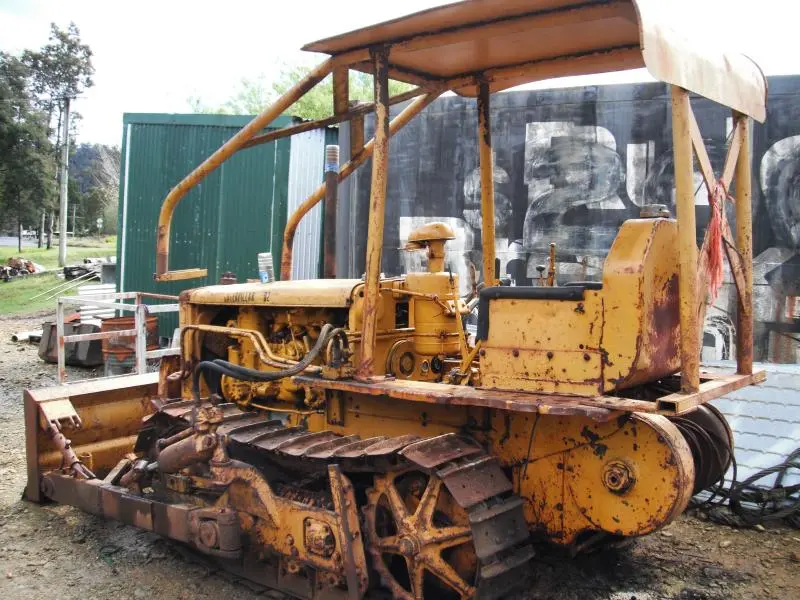
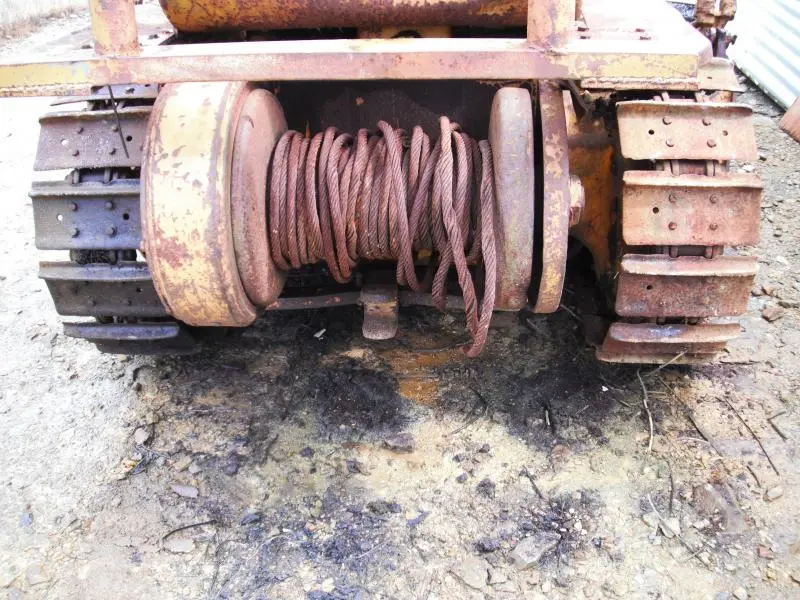
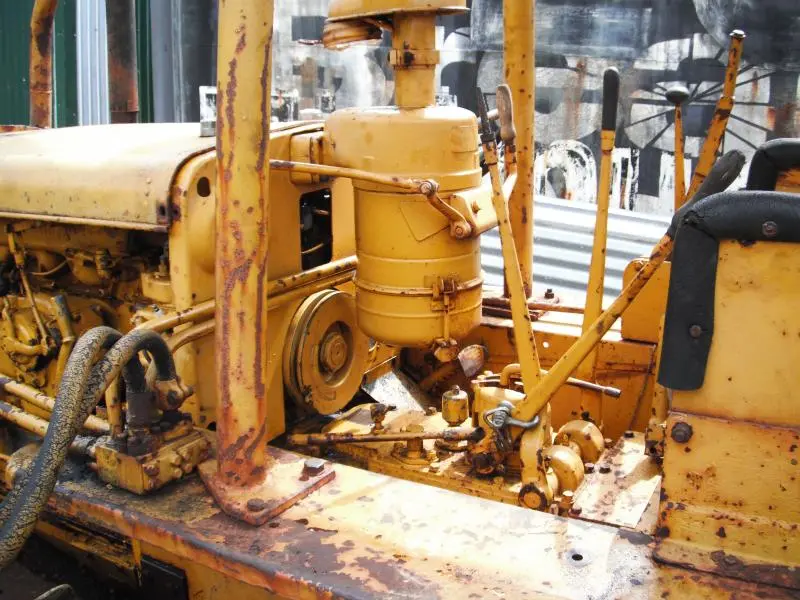
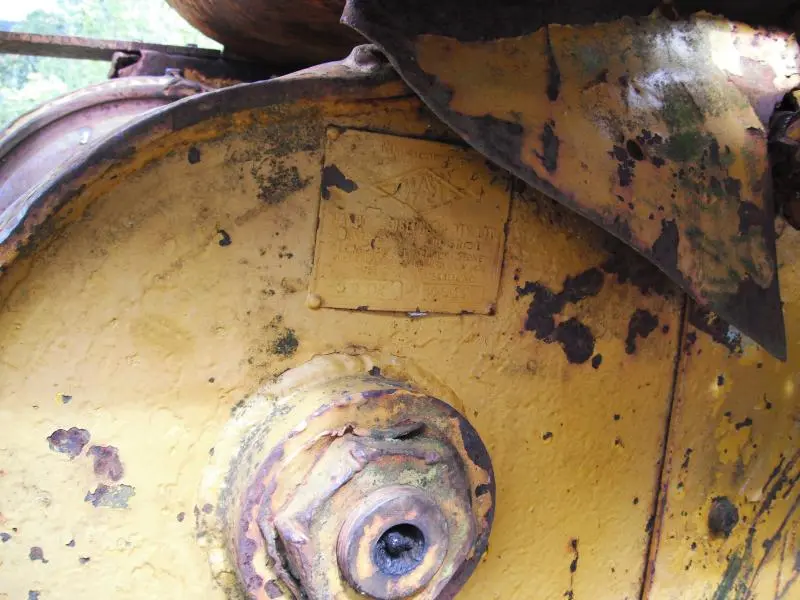
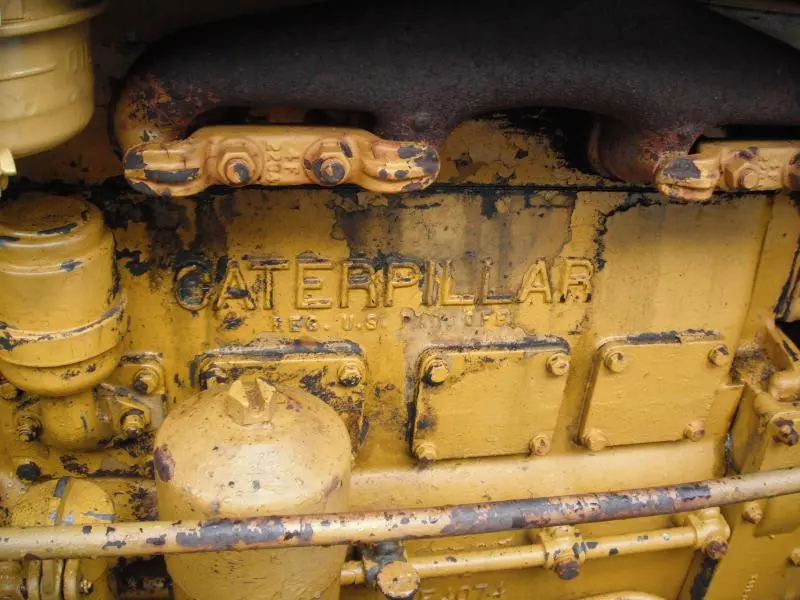
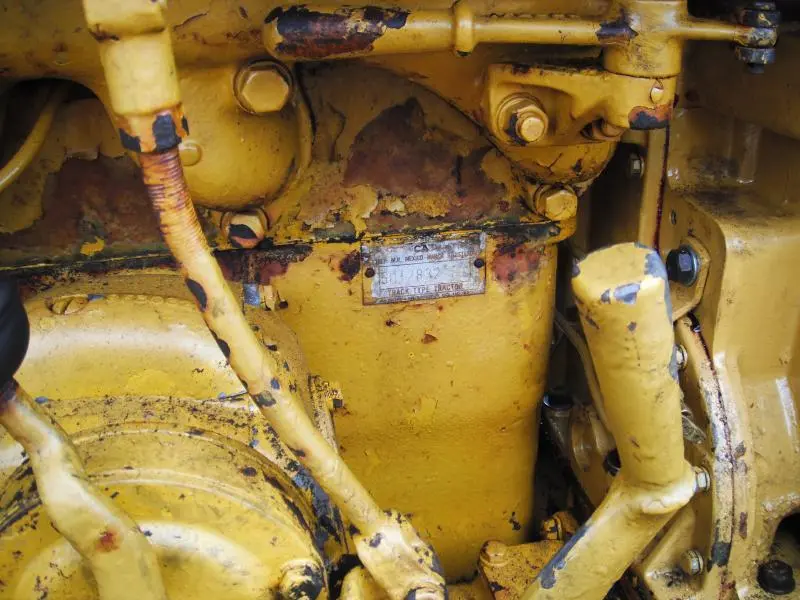
...and here is the plate on the winch, and engine serial number.
[attachment=15317]D2 west coast.jpg[/attachment][attachment=15319]D2 west coast8.jpg[/attachment]
more info to come
found some info on ACMOC re W&J the winch makers - as part of the history of Cat agencies in Aus posted by OzDozer in 2009. It reads:-
For the state of New South Wales .. Caterpillar agency timeline ..
1880 - Waugh & Josephson commenced business in Sydney, as heavy manufacturing engineers. Directors are David Waugh and Sydney Josephson.
1885 - Acquires the Alfa Laval agency for NSW and QLD, and opens A-L agency in Brisbane.
1890 - Sydney Josephson opens branch office in Edward St., Brisbane.
Early 1890's - W & J opens larger premises in Sussex St, Sydney.
1895 - New premises built at Unwins Bridge Rd., St Peters, Sydney.
1900 - David Waugh retired, and Sydney Josephson continued on in the W & J business, alone.
1920 - W & J becomes a Limited Liability company.
1922 - Sydney Josephson dies suddenly, overseas, whilst on a business trip.
1923 - Larger branch office opened in Melbourne St., South Brisbane.
1923 - W & J appointed as Holt agents for Queensland (it appears that Vrai's territory shrank upon this appointment).
1930 - New husband of Mrs Sydney Josephson, one M.S. Atwill, is elected to the Board of W & J. At some later period (date unknown), sons of M.S. Atwill are also appointed to the Board.
1934 - W & J were appointed Caterpillar agents for the state of N.S.W., upon the disenfranchisement of William Adams as Caterpillar dealer for the state.
1936 - W & J import the first Caterpillar Auto Patrol grader into Australia. Almost immediately thereafter, the export of these machines from America was banned.
1936 - W & J commence the manufacture of Caterpillar #10 and #11 motor graders in Australia, under the auspices of Caterpillar Tractor Co., after the U.S. Govt imposes an export embargo of motor graders to the S.E. Asian region. This is the first known manufacture of Caterpillar equipment outside the U.S.
The W & J grader manufacturing operation built the entire grader frame and accessories, and Caterpillar engines and power trains were imported fully assembled from Peoria, and then installed by W & J, to complete the manufacturing process.
The grader engines were given an industrial engine S/N prefix, and the W & J graders were sold as Caterpillar Speed Patrols, to differentiate them from genuine Caterpillar Auto Patrols.
In excess of 600 W & J Speed Patrols were built between 1936 and 1946, and these graders played a very important part in the Allies WW2 airfield construction efforts in the Pacific region.
In 1946, the Steelweld Co, of Braybrook, Victoria, were given an extensive licence-to-build by Caterpillar, and W & J's Caterpillar-supported manufacturing operation ceased from that date.
1937. M.S. Atwill is appointed Chairman of W & J. He serves in this position until 1965.
1937 - W & J import the first LeTourneau bulldozer blade into Australia.
1940 - Not long after the declaration of War in Europe, W & J open a substantial new manufacturing facility for the Caterpillar graders at St Peters, Sydney.
Early 1942 - W & J is requested by the Australian Govt, to concentrate its entire manufacturing resources on the production of Caterpillar graders, and earthmoving attachments, for War purposes. In excess of 500 Caterpillar graders come off the W & J production line during the period from 1942-1945.
In this same War period, W & J became the central Caterpillar parts distribution centre for the Pacific region, for the U.S. Military forces, and the Division of Import Procurement.
1949 - W & J become a public company .. Waugh & Josephson Pty Ltd.
1950 - New premises established at Mitchell Rd, Alexandria, Sydney, in consultation with Caterpillar. The consultation was carried out to integrate stores, administration, and workshops, and also to plan for any future expansion.
1952 - W & J are disenfranchised as QLD Caterpillar agents, and the QLD Caterpillar agency is handed to Hastings Deering.
1965 - Sir John Atwill (son of M.S. Atwill) joined the Board.
1987 - W & J taken over by Robert Holmes a Court in another sharemarket raid. Soon after, Bond Corporation took control of W & J, as they gained control of Bell Group.
Once again, Caterpillar refused to transfer Caterpillar agency for NSW to Bond or any of his companies, and the Caterpillar agency was transferred to Gough and Gilmour, effective February 1989.
April 2004 - Caterpillar agency for NSW and ACT transferred to Westrac
That's a tidy D2 you have picked up there, well done, you will have that main clutch free in no time.
regards
Mike
thanks Mike. I've always wanted a D2.
The one I really wanted belonged to Denny King and was used down at Melaluca in the deep South West of Tassie to mine tin. It was taken down on the deck of the first diesel powered fishing boat in Tas and worked there for years. It is now back and sitting in a shed somewhere awaiting restoration. The owner won't sell though.
But this one appealed to me as it has character. The winch is interesting too.
Can't wait to pull it to bits😉
[quote="Inter674"]thanks Mike. I've always wanted a D2.
The one I really wanted belonged to Denny King and was used down at Melaluca in the deep South West of Tassie to mine tin. It was taken down on the deck of the first diesel powered fishing boat in Tas and worked there for years. It is now back and sitting in a shed somewhere awaiting restoration. The owner won't sell though.
But this one appealed to me as it has character. The winch is interesting too.
Can't wait to pull it to bits😉[/quote]
I read the book about Denny, what a fascinating character he was, and tough too opening up that south west country, I reckon the airstrip he made with the D2 would of been challenging for the pilots to use, but he was really the pioneer of outback trekking in Tassie wasn't he.
Good luck with the D2, she should be easy to clean up, particularly if she starts easy and steers already.
regards
Mike
Denny was a remakable man. I've seen the D2 he used and it is an interesting machine. The tracks are very worn having been used on quartz country to strip mine tin, but the panel work whilst faded is in very good condition. Denny also bought a heap of spares, as you would expect being in such a remote location, so the new owner only has to swap the tracks out. The blade is buggered though.
He also had a Cat loader down there that was transported on the deck of a fishing boat, the Remere. The loader is not mentioned in the book which I think try to suggest that Denny loaded the sacks of tin ore by hand. He probably did early on, but he later had a Cat dozer and loader to help! I believe the loader is still in use somewhere in the Huon valley.
It would be nice to see Denny's D2 restored to its former glory or even brought out of the shed where it currently sits buried under all sorts of stuff.
[quote="Inter674"]Denny was a remakable man. I've seen the D2 he used and it is an interesting machine. The tracks are very worn having been used on quartz country to strip mine tin, but the panel work whilst faded is in very good condition. Denny also bought a heap of spares, as you would expect being in such a remote location, so the new owner only has to swap the tracks out. The blade is buggered though.
He also had a Cat loader down there that was transported on the deck of a fishing boat, the Remere. The loader is not mentioned in the book which I think try to suggest that Denny loaded the sacks of tin ore by hand. He probably did early on, but he later had a Cat dozer and loader to help! I believe the loader is still in use somewhere in the Huon valley.
It would be nice to see Denny's D2 restored to its former glory or even brought out of the shed where it currently sits buried under all sorts of stuff.[/quote]
I agree the D2 would make a interesting story if presented in a tourist / history type exhibit, I always wondered how they got the D2 off the small fishing boat without the boat rolling, you can imagine 3 tons of dead steel teetering on the gang plank with a howling 40 knot south-wester blowing in that shallow river!
The book talks about him hand loading the bags of tin into the hold of his boat doesn't it, in the early days, his wife must have been a remarkable woman too, and his kids, living in that hut rarely visited by outsiders, though the family ended up at Sandy Bay didn't they, when the kids were young teenagers? I always like the story about Denny in WW2, when some General was commenting on the Swallows flying above them, and Denny pipes up from behind, "Excuse me General, but I think you will find they are Swifts, not Swallows", or words to that effect, because as you know Denny was a expert ornithologist, and expert on most things related to the Aussie nature around him. A real Aussie pioneer.
regards
Mike
I've heard two version of how they got it off.
One version is that the Caterpillar dealer rep (from Wiliam Adfams) drove it off. They had to wait for a few days before the swell in the inlet near the house was calm enough to do so. It was then driven along planks place up and over the gunwales and onto the shore, then up onto the button grass where it sank and remained stuck for some time.
The other version is that Denny drove it off but I think the former is more likely as Denny apparantly had had very little experience driving machines.
A local ex-William Adams bloke who worked there at the time, and helped load the cat loader onto the Remeer said William Adams sent Denny a huge bill for the whole delivery process and then proceeded to make capital from the sale by advertising his machine as 'the most Southerly D2 operating in the World'. Denny maintained the machine very well though and interestingly, he used some of the D2 spares (eg., from the tracks) to patch up and keep going other mining machinery on site at the time.